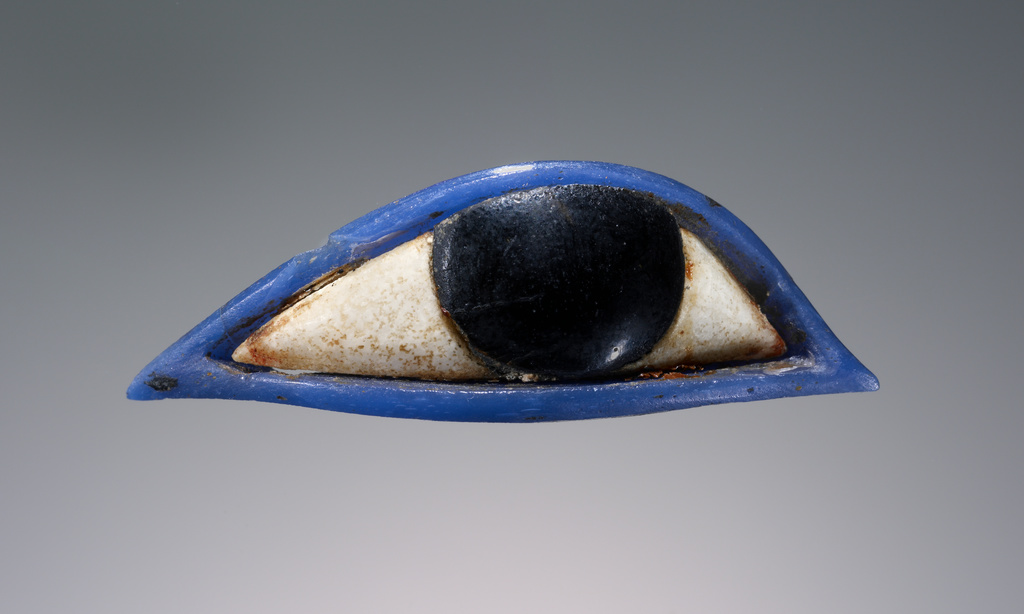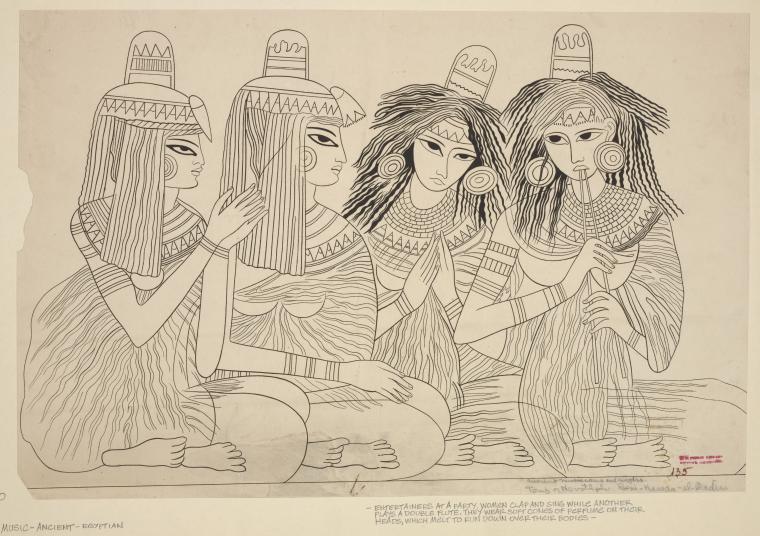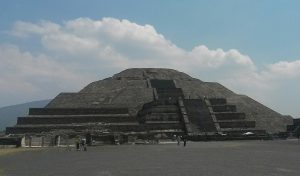Did you know that the existence of beauty products dates all the way back to 4,000 B.C.E.? In ancient Egypt, eye cosmetics were kept in cylindrical containers made out of either stone, ceramics, or wood for preservation.1 When they were first created, these eye products were used by their people for adornment reasons. However, as time went on, Egyptians developed kohl – a paste which was made up of mainly galena, a mineral form of lead sulfide. They realized this could be used for medicinal purposes as well—causing the quality and quantity of eye cosmetics throughout Egypt to increase drastically.

By 2,000 B.C.E. the accustomed eye cosmetic known as kohl was advanced drastically. Scientists have recently used a method called wet chemistry to determine this evolution.1 In addition to kohl being used to add personal sense of style to their faces, it was also a new and quite interesting source of protection. Therefore, both men and women took advantage of kohl.
At first, kohl was not used in the way we use eyeshadow today, but more like eyeliner. An extremely thick ring of eyeliner surrounded the whole eye.3 It also was not only used for beautifying purposes, but also for protection.4 Since the first kohl creation was a very dark black shade, it reflected light off of the dark pigment, protecting the eyes from harmful sun rays. Kohl was used to surround the eyes of both men and women. Simultaneously, kohl’s main ingredient, galena, was known as a disinfectant among the people of Egypt. This led the ancient Egyptian physicians to lean toward kohl as a prescribed drug for various diagnosed eye diseases.1 The Egyptians didn’t necessarily benefit aesthetically through obtaining a whole color palette of kohl. The medicinal side was extremely influential. The galena was mixed with other ingredients, including water, to create pastes of various tones. Among the most popular of these tones was a dark black and a very vibrant green.6
The deep, dark black kohl was created by the mixing of galena and soot. Soot is an extremely flaky substance that contains high amounts of carbon, which gave it the jet-black look.7 The green kohl on the other hand was made up of galena and malachite, a green pigmented rock. This rock was pummeled and mixed with the galena and water, creating a thick, vibrantly colored paste.8

Although the people of Egypt don’t use kohl the way they used to in 4,000 B.C.E., we can most certainly conclude that where we are today in the cosmetic industry would have definitely been delayed if it weren’t for the Egyptians. Their exploration of cosmetics is the base of our creams, exfoliators, and enhancers that exist on the shelves today.8
- P. Walter, et. al., “Making Make-Up in Ancient Egypt,” Nature 397, no. 6719 (Feb 11, 1999): 483-484. ↵
- P. Walter, et. al., “Making Make-Up in Ancient Egypt,” Nature 397, no. 6719 (Feb 11, 1999): 483-484. ↵
- Encyclopedia of Clothing and Fashion, 2005, s.v. “Western Cosmetics,” by Kathy Peiss. ↵
- P. Walter, et. al., “Making Make-Up in Ancient Egypt,” Nature 397, no. 6719 (Feb 11, 1999):: 483-484. ↵
- P. Walter, et. al., “Making Make-Up in Ancient Egypt,” Nature 397, no. 6719 (Feb 11, 1999): 483-484. ↵
- F.T. Walton, “My Lady’s Toilet,” Greece & Rome 15, no. 44 (May 1946): 69. ↵
- Marguerite Johnson, Ovid on Cosmetics: Medicamina Faciei Femineae and Related Texts (United Kingdom: Bloomsbury Publishing, 2016): 11. ↵
- Zoe Diana Draelos, “Overview: cosmetics and the art of adornment,” Dermatologic Therapy 14, No. 3 (September 2001): 175-177. ↵
- Zoe Diana Draelos, “Overview: cosmetics and the art of adornment,” Dermatologic Therapy 14, No. 3 (September 2001): 175-177. ↵



57 comments
Janaya Felder
It’s so interesting that kohl had such practical use in protecting them from the sun and today’s eye makeup isn’t so much. I wonder how surprised the Egyptians would be to see how eye makeup has changed with our current cosmetics! I enjoy reading about the Egyptian lifestyle so this was a nice addition to articles on them!
Margaret Cavazos
I think it’s incredibly interesting that ancient Egyptians’ eye makeup was also used for medicinal purposes. I am astonished that it was used as sun protection as well. I recently figured out that football players use that under eye makeup to deflect the sun and I think it’s interesting that the same idea lasted thousands of years. To have a makeup that doubled as sunglasses and a disinfectant is an incredible find and I wish there was more of it around today.
Madeline Emke
As a makeup lover, I found this article very informative and fun to read. I knew that men and women used kohl as a symbol of their status within society, but I never realized there were medical benefits as well. Additionally, I never realized how color played a large part in early cosmetics as well. It was very interesting to discover how kohl reflected sunlight and helped heal various eye diseases.
Meadow Arriaga
You never think where everyday things originated from, because we are too accustomed to them. I, too believe Egyptian kohl used as makeup had a big influence with the popular the popular makeup product called “eyeshadows”. Because we know about chemical and how they can be harmful to our bodies nowadays, I can not imagine the struggle of searching for resources that can perform the same job, or similar.
Julia Edwin-Jeyakumar
What an awesome read. I knew that ancient Egyptians used kohl around their eyes but did not know that it was used as eye protection as medicine. I have the bentonite clay that the Egyptians use and I use it as well. They used a lot of stuff, but they are also ones with the thick eyeliner that I would see in movies! Awesome article!
Alexander Avina
This was a very intriguing article. I never knew that cosmetics played such a large role in the lives of the Egyptian people. It is astounding to hear about the sophistication of this group of people, who we often view as ancient. This was a very short and sweet read that I really enjoyed. I would have never been aware of this aspect of the lives of the early Egyptian people. This was a very cool concept to write about.
Elizabeth Maguire
What an interesting and informative article. I knew that ancient Egyptians used kohl around their eyes but did not know that it was used as eye protection of as medicine. I have never before considered the reasons for which Egyptians wore makeup. I did not know that kohl was a prescribed drug for various diagnosed eye diseases in the Egyptians time period.
Sebastian Azcui
This is a very interesting article because it is a product that it is used until today! It is interesting how Egyptian woman before used makeup but for other reasons. I had no idea that the eyeliner was used in order to protect their eyes from the sun and it has a meaning as well. Makeup before was not used for other personal reasons, but it actually helped Egyptians stay healthier by protecting their eyes and using it as medicine. I am curious to know if this method is still used today.
Sierra Salas
This article taught me about the reasons why the ancient Egyptians used Kohl. Before reading this article I thought kohl was used strictly for beauty purposes, but now I know Kohl had medical benefits linked to it. I had not even considered the fact that the dark black shades of kohl could be used as a sort of protection from sun rays. Also I had no idea that ancient Egyptian men also used Kohl. I enjoyed reading about the multiple benefits that galena had to offer, such as being a disinfectant.
Amelia Hew
It fascinates me on how advance Egyptians is during the early times. Despite their lack of modern technology, they were still able to make not only a cosmetic but also manages to use it as a protection from the harsh sun in Egypt. Ancient Egyptian cosmetics to me are exotic and unique, I believed that it also plays a major role of influence in nowadays cosmetic products and the fact that both men and women uses khol really extended my knowledge towards ancient Egyptians.